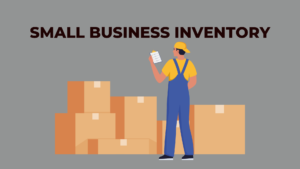
If you’re here, you probably want to know more about inventories and what exactly they bring to the table. This article will tell you all about how to manage your inventory, what they are, and how you can easily create an inventory template and provide you with a simple inventory template to help you manage your inventory data effectively. Keep reading to learn more!
To make sure that your company is on the right path to success, it’s critical to regularly analyze stock inventory. For industries like construction management, having the right tools to track materials, equipment, and supplies ensures smooth project execution. Using inventory management software for such purposes allows better accountability, ensuring your projects run smoothly without material shortages. What is Business Inventory Management? The accounting of goods, components, and raw materials that a business either utilizes in manufacturing or sells is known as business inventory.
What is Business Inventory Management?
The accounting of goods, components, and raw materials that a business either utilizes in manufacturing or sells is known as business inventory. You use inventory management or inventory control as a business leader to make sure you have adequate goods on hand and to spot when there is a shortfall.
In order to always have the appropriate items for sale, in the right amount, at the right time, inventory management works with the supply chain. When done well, small businesses may maximize sales while lowering the expense of carrying extra inventory. You can track your inventory in real time to make this process more efficient with the aid of good inventory management.
What are the benefits of a good Inventory management template?
A thorough inventory management template will ensure the following:
• Reduce expenses, enhance cash flow, and increase the profitability of your company
• Continually tracking your inventories, being aware of inventory value and assisting in physical inventory count.
• Aid in demand forecasting
• Avoid shortages in production and supplies.
• Avoid having too much inventory and raw resources.
• facilitating simple inventory analysis across all devices
• Be available starting with your retail point of sale.
• Provide rapid and easy bar code scanning to expedite up intake and maximize warehouse organization
• Make inventory monitoring across many sites and/or warehouses possible with multi-location management.
Types of Inventory Templates Used By businesses
1. Raw Material Inventory: All the resources, supplies, and materials needed to build or assemble a finished product are referred to as raw materials. Manufacturers and retailers that assemble some or all of their items must manage this inventory at all costs.
2. Work in Progress Inventory: Unsaleable inventory items that are being transformed into saleable items are referred to as work-in-progress inventory. A final product can be delayed by a number of processes, including:
- both gathering and putting together diverse product components and the finished item itself
- collecting and putting the packing together
- putting the finished item in its container
- the act of sealing or grouping individual products into a case or pallet of cases
3. Final Inventory: What we most frequently refer to as “inventory” are finished commodities. These are the goods that are offered for sale. Without any additional assembly or packing on the side of the shop, they might be in a customer’s hands right away. The majority of merchants only sell finished goods. This is the inventory that lesser-known suppliers and well-known global brands supply to merchants.
How to Conduct a Business Inventory (for small businesses)?
1. Sort your inventory by priority.
You can better identify which things you need to order more frequently and in larger quantities, as well as which items are crucial to your company’s operations but may be more expensive and move more slowly, by classifying your inventory into priority categories

Experts frequently advise categorizing your inventory into groups A, B, and C. The A group consists of more expensive things that you don’t need as many of. The C category includes inexpensive products with high turnover. The B group represents the middle ground: reasonably priced goods that move off the shelves more slowly than C goods but quicker than A goods. To create an inventory spreadsheet this, you can use spreadsheet or google sheet.
2. Keep track of all product details.
Keep track of the product details for the goods in your inventory. SKUs, barcode data, suppliers, countries of origin, and lot numbers should all be included in this data. Consider keeping track of the price of each item over time so you can be aware of elements like scarcity and seasonality that might affect the price. Keep an inventory list.
3. Analyze the performance of the suppliers.
Your inventory may have issues if your source is unreliable. It’s time to take action if you have a supplier who consistently makes deliveries late or consistently under delivers an order. Find out what the issue is by talking about it with your provider. Be ready to change partners or to cope with erratic supply levels and the potential for inventory shortages as a result.
4. Monitor sales.
Again, this seems obvious, but it involves more than just totaling revenues at the end of the day. You should regularly update your inventory totals and be aware of what and how many things you sold. However, you’ll also need to examine this data. Do you know when specific things start to sell more slowly or less? Is it the season? Are there particular things that you sell on a given day of the week? Do some products frequently sell in groups? Maintaining control over your inventory requires understanding not just your sales figures but also the bigger picture of how things sell.
Free Inventory Template(Google Sheet/Doc)
Anyways, we’ve compiled a free inventory template that will help clear things up for you. Click here to access the free inventory template!
You can use google sheets inventory template as well and customize the one we have provided here. Use a template for your convenience and focus on all types of inventory like product inventory, stock inventory and even food inventory.
It’s a simple task to keep a track of all your inventories for your own benefit as it helps you calculate your accounts and use it for other purposes like business budgeting, analysis and so on.
We hope you found this article helpful. Please don’t forget to leave a comment. All the best!

